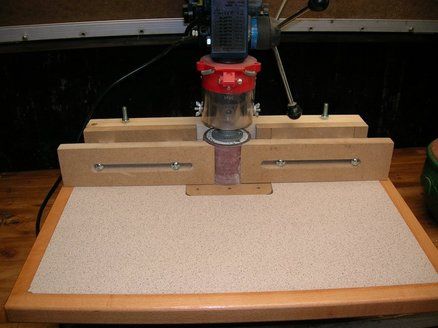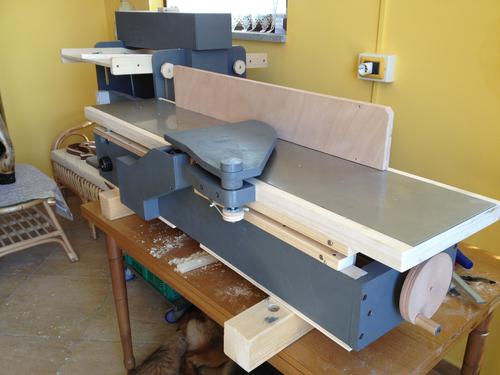transatlantic
Boom!
It'll be a while before I get planer, so in the mean time I'm looking for other options. I know of the router table method and the table saw method, but both suffer from not being able to surface plane wide pieces of more than 80mm or so. You can turn the piece around to effectively give you twice the cutting height, but I think it'll be a pain to keep it accurate. So I was wondering about the idea of having a homemade planer, but instead of the drum having knifes, it would be some low grit paper? Mostly because it would be much easier to make and I'd trust that a lot more than a homemade system with spinning sharp bits!
So it would work like this :

but be build into a proper base unit with long infeed and outfeed tables like this :

The main issue I guess will be how much you can cut off, but I'd be happy if it could take off 0.5mm at most, and just use a lot of passes. I'd have to play about with the grits for a speed/finish compromise. I'm guessing 60 - 80?
What other issues would there be?
So it would work like this :

but be build into a proper base unit with long infeed and outfeed tables like this :

The main issue I guess will be how much you can cut off, but I'd be happy if it could take off 0.5mm at most, and just use a lot of passes. I'd have to play about with the grits for a speed/finish compromise. I'm guessing 60 - 80?
What other issues would there be?

































